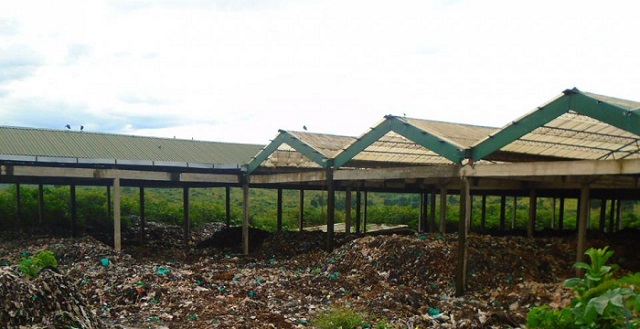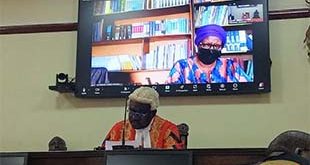
Kampala, Uganda | THE INDEPENDENT | The multi-billion shilling garbage recycling plant constructed in Hoima Municipality is lying idle seven years after it was constructed.
The plant that was envisaged to turn garbage into manure was funded by World Bank through the National Environmental Management Authority-NEMA. Apart from aiding effective garbage management, the project was also supposed to support agriculture by providing compost manure, to be used by farmers.
The facility which sits on three acres of land had a capacity of processing 70 tons of garbage daily. But the 2.5 billion Shillings facility has been lying idle for the past five years. It does not have electricity supply and no running water; the two catalysts for its operations.
Residents near the dormant recycling plant have already raised the red flag, arguing that they are likely to contract diseases related to poor waste management. Joan Birungi, a resident of Kibati cell says that the health of communities living near the plant is at risk.
Patrick Barongo, another resident says that the non-functional waste management plant emits a foul stench which pollutes the entire area and makes it non conductive for human habitation.
Hoima Municipal Town Clerk David Kyasanku told URN that the operations of the facility were affected by a fire that destroyed part of it and affected its utility supply last year. Kyasanku says they have now earmarked 1 billion Shillings to revamp the operations of the plant.
He is optimistic that once revamped, the project will improve the town’s hygiene and sanitation, by getting rid of garbage which is a raw material to the plant.
Kahoora division, which comprises the central business area, is the biggest generator of solid waste in Hoima district. Some of the key waste generators include the abattoir, the central market, restaurants, hotels, schools, factories and other processing units in Kiryatete industrial area.
Kyasanku, says the excessive garbage in the town was due to the indiscriminate dumping habit by the town dwellers.
According to the municipal statistics, solid waste generation rate was 150 to 200 tons per day in 2016. A total of 34.6 per cent of the waste generated at household level was food waste, about 26.8 per cent was plastic, paper and cardboard made up about 23.9 per cent while the proportion of textiles in the waste was estimated at 7.8 per cent.
Glass contributed to 5.0 per cent, metal and electronics waste portioned to 1.7 per cent and 0.2 per cent respectively.
*****
URN
 The Independent Uganda: You get the Truth we Pay the Price
The Independent Uganda: You get the Truth we Pay the Price


